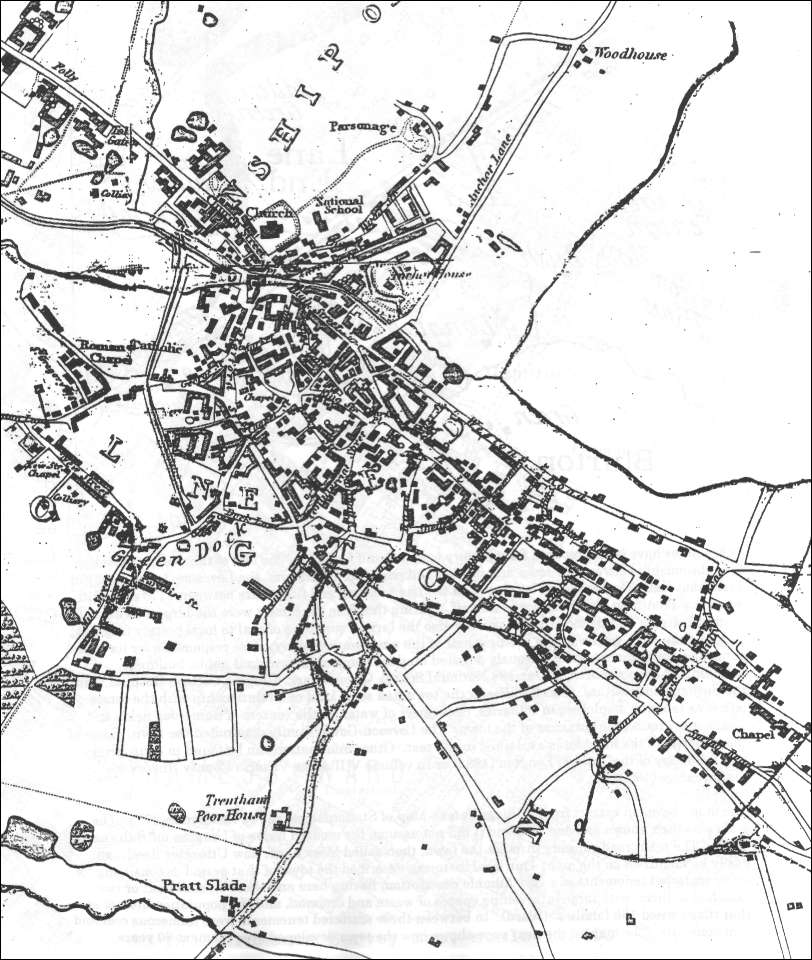|
Mear Lane End and the development of
Lane End
".........
has long been one of the main ways of access into North Staffordshire
from Derbyshire. It was on this road, roughly at the point where the
Anchor Brook and the stream from Goldenhill meet, that the hamlet of
Lane End or Meare Lane End grew up in the late 17th century under the
influence of coal and ironstone mining and ironworking.
In 1666
13 houses in Longton were chargeable to Hearth Tax and 12 in Meare Lane
End.
Meare Lane End was mentioned c. 1680 by Gregory King who noted that
there were 5 or 6 houses in Longton itself.
Tracks
led south-eastward from Meare Lane End to Stone and northward over
Sandford Hill to Hanley, Adderley Green, Leek, and the north-east of the
county by the 18th century. The turnpiking of the Newcastle to
Uttoxeter road under an Act of 1759, of the road to Stone under an Act
of 1771, and of the road to Adderley Green under an Act of 1813 greatly
facilitated the growth of Lane End.
By 1775
there was a nucleus of houses at the junction of the roads and for a
short distance along these three roads and along the road to Longton
Hall which joined the Stone road just south of the centre of the
village.

Plot's map of North Staffordshire c.1670
showing Mearlane end
- clip map for large view -
There
were in addition a number of scattered houses and numerous coal pits
between the Uttoxeter road (then called Meer Lane) and the Stone road. In 1784 Lane End was still small enough to be called a village, although it was fast developing as a community. The first
school was built c. 1763 and the first church in 1762, and in 1789 the market-square (now Times Square) was laid out at the
junction of the Uttoxeter and the Stone roads. By the end of
the century there was a network of streets in the centre of the town
forming a built-up area bounded by Market Lane (now Transport Lane), the
Stone road, the Uttoxeter road, and Commerce Street; the streets in this
central area are now called Cornhill Passage, St. Martin's Lane, Cyples
Lane, Kingcross Street, and Chancery Lane. By then, also, both sides of
the Uttoxeter road had been built up for about half a mile from the town
centre. In 1794 a second market-square (later Union Square) was laid out
at the north end of Commerce Street."
From:
'Longton', A History of the County of Stafford: Volume 8 (1963), pp.
224-246.

|
![]()
![]()

![]()
![]()